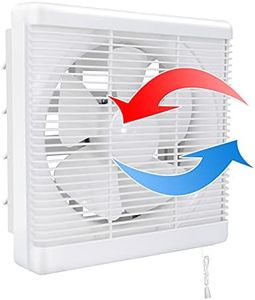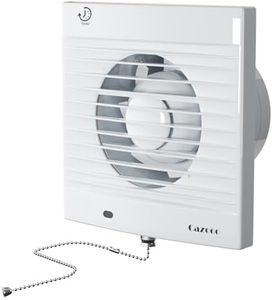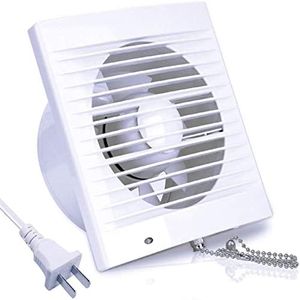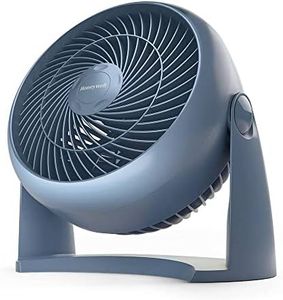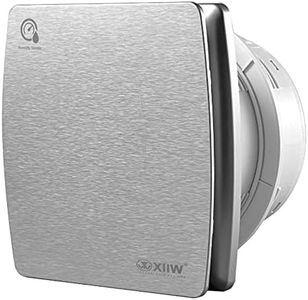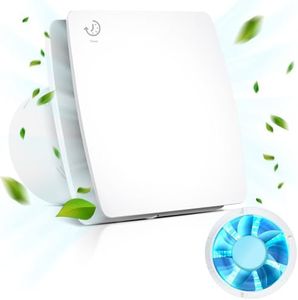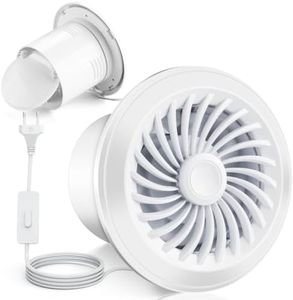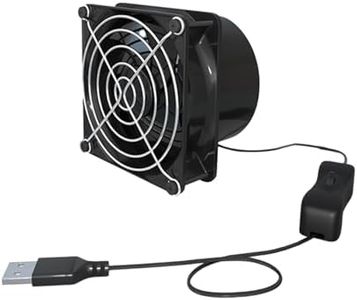We Use CookiesWe use cookies to enhance the security, performance,
functionality and for analytical and promotional activities. By continuing to browse this site you
are agreeing to our privacy policy
10 Best Window Fans
From leading brands and best sellers available on the web.Buying Guide for the Best Window Fans
Choosing the right window fan can greatly improve your comfort by helping to ventilate your home, cool rooms, and manage indoor air quality. Start by thinking about where you’ll use the fan, how large the space is, and the climate in your area. Consider factors like the ease of installation, the fan’s airflow and speed options, and how much control you want over the settings. Understanding the key features of window fans will help you match your needs with the right product.Fan SizeThe size of a window fan refers to the physical dimensions of the fan and its compatibility with window sizes. Larger fans can move more air, making them ideal for bigger rooms or spaces that need fast air exchange, while smaller fans are good for compact spaces or single windows. Measure your window before shopping to ensure the fan will fit securely and work effectively. If you want to cool a large living area, opt for a wider or longer fan, but for a bathroom or small office, a compact model will do.
Number of Fan Blades and FansWindow fans may have a single fan or dual fans side-by-side. Dual fans allow for more airflow and often let you set each fan to different modes (like one blowing in and one blowing out). The blade design and number can also impact airflow; more blades might mean quieter or smoother operation. If you want more versatility in moving air or balancing indoor and outdoor temperatures, consider dual-fan models. For simple, straightforward airflow needs, a single-fan option may be sufficient.
Airflow Direction and ReversibilityAirflow direction determines whether the fan pushes air into the room (intake) or pulls air out (exhaust). Reversible fans can switch between these modes, either manually or with a button. This is important for adapting to changing weather—drawing in cool air or pushing out hot, stale air. If you want complete control over air exchange, look for a reversible fan. If you mainly need to bring fresh air in, a one-directional fan could work.
Speed SettingsSpeed settings determine how fast the fan blades spin, affecting how much air the fan moves and how much noise it makes. Basic models may have a single speed, while more advanced ones offer two or three speeds. Lower speeds are suitable for gentle ventilation or quieter operation at night, while higher speeds are better for quick cooling or intense ventilation. Consider how you plan to use the fan—if you want quiet operation for sleep or work, multiple speeds can be helpful for adjusting comfort.
Adjustability and InstallationThis refers to how the fan fits into your window and whether it can be extended or tilted to fit different window types. Fans with expandable side panels can fill gaps in various window sizes, ensuring a tight fit that improves efficiency and safety. Some fans tilt or angle to better direct airflow, or have locking mechanisms for security. If your windows are an uncommon size, or you want extra ease of setup, look for models with adjustable features.
Noise LevelNoise level describes how loud the fan operates, usually measured in decibels. Quieter fans are better for bedrooms, offices, or any area where peace is important, while higher noise may be tolerable for kitchens or garages. Consider your sensitivity to noise and the location where you'll install the fan. If you want to use the fan overnight or during phone calls, prioritize a quieter model.
Additional FeaturesSome window fans offer extra features, such as remote controls, digital thermostats, programmable timers, or bug screens. These can make your fan more convenient and effective for specific needs. For example, a remote control is useful for hard-to-reach windows, while a thermostat can automatically turn the fan on or off depending on the room’s temperature. If automation or easy access is important to you, consider fans with these added options.
